Features of planting thuja western Smaragd and caring for it
Plants with high ornamental qualities are usually demanding on climatic conditions and require special care. However, despite its spectacular appearance, thuja western Smaragd is completely unassuming to care for, planting this tree on the site, as well as creating a hedge, is not difficult.
General information and main varieties
This hybrid of thuja western, bred in Denmark in 1950, got its name for the color of the crown - from the Greek "smaragd" means "emerald green". Scaly needles tightly envelop the trunk and skeletal branches, and their rich color does not change even in winter. The crown has a pronounced conical shape. Thuja Smaragd reaches 5 m in height and 2 m in diameter (near the ground). The annual growth rate is from 10 to 50 cm (depending on the quality of the soil and variety).
Thuja Smaragd is often planted to create a durable hedge. If the optimal distance is observed, the tops of the trees do not close, there is no strong shading, the plants are well ventilated. Delimiting space with thuja is not only a decoration of the site, but also a healthier air.
On the basis of thuja Smaragd, several varieties have been bred, mainly differing only in the color of the needles.
- Golden Smaragd (or Janet Gold). The needles have a soft golden hue, which makes the tree seem bathed in sunlight even in cloudy weather.
- Variegata. Light scales at the ends of the branches create the effect of a powdered crown. In height, an adult thuja reaches no more than 3 m.
- White Smaragd. The original variegated appearance is achieved by alternating green and light scales.
- Whitbont. Another variety of thuja with a variegated crown, which has white scales at the ends of the branches. With the onset of autumn, their color changes to greenish. Such a thuja grows more slowly than others, giving an annual growth of no more than 20 cm.In an adult state, it reaches 3 m.
- Sunny Smaragd. This variety grows quite quickly - by the age of 10, an already ripe tree with a height of about 3 m is obtained. Young branches have a juicy yellow color and orange tips.
Important!
In some sources, thuja western Smaragd Spiral is mentioned as a separate variety, but this is the usual upright variety with a conical crown. The original spiral shape is achieved with constant shaping and adjusting the direction of growth (like twisted bamboo shoots in flower bouquets). When you stop special care, the barrel will straighten out.
Most often, in garden plots and in the urban landscape, you can find the classic emerald thuja Smaragd.
Growing conditions
Western thuja Smaragd belongs to acidophilic plants (calcephobes), that is, it prefers acidic or slightly alkaline soils (pH 5-7). Natural loams work well. The experience of many gardeners shows that the tree thrives on sandy stones. And with regular watering, the classic emerald thuja Smaragd on such soils can give up to 60 cm of annual growth. An important condition is that the soil must be well drained.
As for the illumination, the thuja Smaragd can be attributed to shade-tolerant plants, but such areas, where the sun almost does not look in, are not suitable for it. If varieties with a variegated crown are selected for planting, then good illumination is important for them. Otherwise, the decorative color will be lost, the crown will fade and thin out.
Hedge device
When planting thuja Smaragd as a hedge, preliminary marking is required.If there are no restrictions on the height of the hedge, then the distance between the seedlings should be at least 120 cm. The thickened plants will begin to "jam" each other, which will manifest itself as growth inhibition and disease.
The approximate diameter of the crown of thuja Smaragd at the bottom:
- 5 m high - 120-125 cm;
- 4 m high - 110 cm;
- 3 m high - 80-90 cm.
If a hedge is planned on the border with a neighboring plot, then the recommended height is no more than 2 m.The distance between the seedlings at this height is 50-60 cm.
Thuja Smaragd lends itself well to a haircut (although it does not need it), so you can not only arrange the grown trees in the form of regular cones or candles, but "cut" other figures, for example:
- spiral;
- drop-shaped crown on a trimmed leg;
- alternation of fluffy "balls" with trimmed places on the trunk.
The haircut should be done annually in the spring and fall, but many only adjust the hedge in the spring.
Landing technique
Thuja Smaragd can be planted during the entire growing season, but it is preferable in the spring. The main condition for good survival is an intact clod of earth on the roots and sufficient moisture.
If the root system of the thuja is exposed, then the risk of death of such a plant increases. Planting such specimens should be done only in early spring or already in late autumn, when the growing season is over. In this case, the preferred height of the seedling is no more than 150 cm.
It is not recommended to apply fertilizers when planting thuja. If the soil is depleted, then a mixture of peat with fertile soil, compost or just garden soil is poured into the planting pit. If the soil structure is too dense, coarse sand or crushed bark is added.
If the planting of thuja was carried out in the fall, then a complex of mineral fertilizers for conifers is applied in the spring, and for spring planting - after 6 weeks. In the first year, the dosage recommended by the manufacturer is halved.
The planting hole should be at least 20 cm wider and deeper than the earthen clod of the seedling. But many experts advise to double the volume. This will provide the thuja, both from the sides and from the bottom, with a layer of loose soil sufficient for good survival.
Important!
If the soil is too dense and wet, then a drainage layer (broken brick, expanded clay, pebbles) must be poured onto the bottom of the pit. Soil acidification will lead to the development of root rot.
The dug hole is pre-spilled with water. After it has been absorbed, about 10 cm of soil is poured onto the bottom, then an earthen lump is installed on it, the level of the root collar is adjusted (it should not be covered with earth or protrude too much). The soil is covered in layers around the coma and periodically spilled with water. At the final stage, the near-trunk circle is framed with a small side, the final watering is performed. After planting thuja, the soil can be mulched with needles or mown chopped grass (without covering the root collar).
Care
The main care for thuja Smaragd is timely watering and fertilization (it can be done once in the spring). In dry season, evening sprinkling on the crown is very useful.
For the winter, young seedlings must be covered with a special material, this will protect them from frost and sunburn. Adult thuja Smaragd rarely suffer from the spring sun.
The trunk circle from rodents can be laid with spruce or pine branches. It is important to protect the thuja from domestic animals: if a cat or dog regularly urinates on or under a tree, the needles will turn black, and the plant will gradually die.
In some cases, the appearance of the thuja suffers from diseases. In the fall, the needles of some varieties become brownish - this is a natural process. But if the browning or yellowing began during the active growing season, then the reason may be a fungal attack. All infected parts must be cut off, the softened blackened areas on the trunk must be cleaned, the crown and the soil must be treated with Fundazol (0.2%).
Of the pests for thuja, the most dangerous are false shields, aphids, bark beetle, tick, moth moth larvae. To combat effective drugs "Aktara", "Actellik", "Karbofos", "Fitoverm", "Decis", "Antio". In spring and autumn, regular preventive treatments with insecticides can be carried out.
Thuja western Smaragd rarely gives trouble to owners. This plant is frost-resistant, takes root well and propagates quite easily by cuttings (53% take root) and even by seeds, which allows you to get your own planting material for hedges.
In order to grow a beautiful and stately tree in a few years, the usual care in the form of moistening the soil and maintaining the purity of the trunk circle is enough. Simple techniques such as mulching or drip irrigation minimize the effort to grow thuja even in the driest summer.
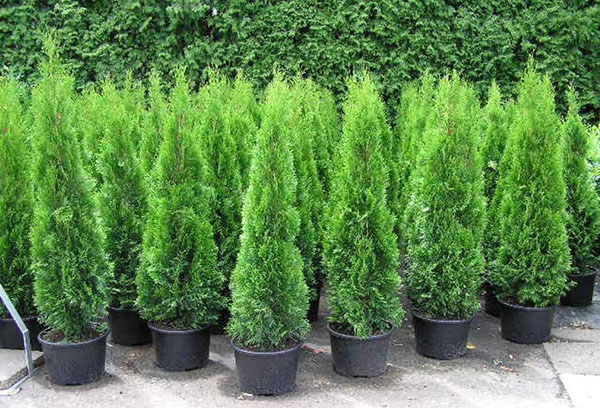
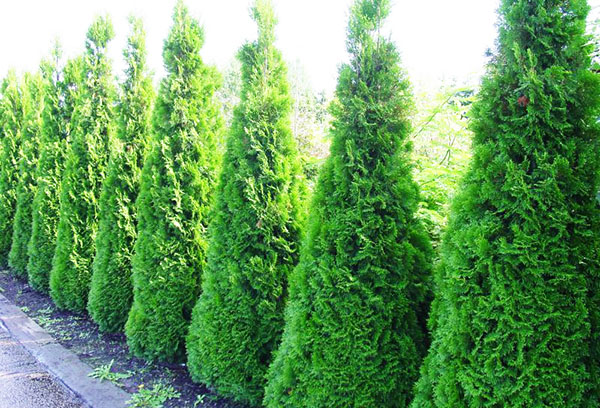
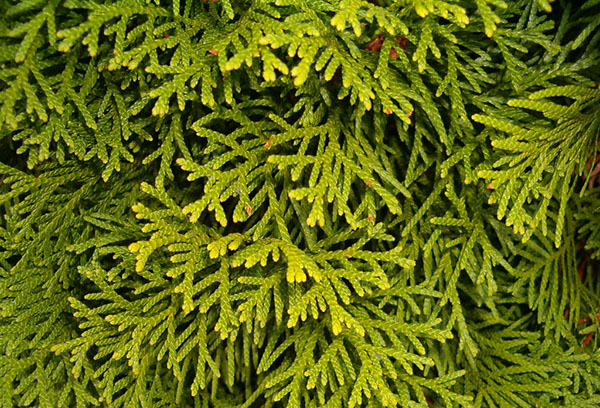
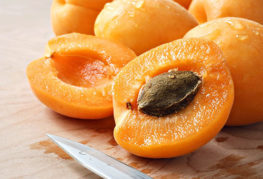

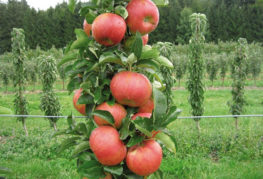
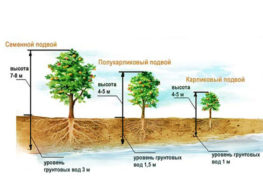
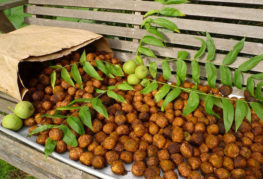
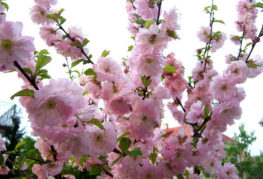
and will be published shortly.